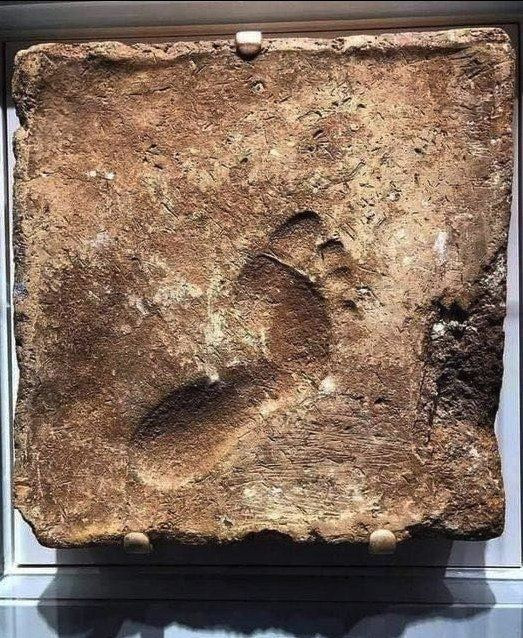Archaeologists have recently made a discovery of monumental importance, one that could fundamentally change our understanding of human prehistory. Unearthed in New Mexico’s White Sands National Park, the oldest human footprints ever found in North America have been dated to an astonishing 23,000 years ago. This finding directly challenges the long-established “Clovis First” theory, which posited that humans arrived in the Americas approximately 13,500 to 13,000 years ago. Instead, these ancient footprints suggest a much earlier human presence, potentially rewriting the timeline of migration and settlement in the Americas.

Unlocking the Secrets of the Past
The story of this groundbreaking discovery begins in 2009, when archaeologist David Bustos uncovered fossilized footprints preserved in the mud of an ancient lakeshore at White Sands. The footprints were remarkably well-preserved, offering an extraordinary glimpse into the lives of the people who left them behind. Radiocarbon dating of Ruppia cirrhosa, an aquatic ditch grass found trapped in the footprints, revealed their incredible age—between 22,800 and 21,130 years old. This discovery provides an invaluable window into the daily lives and movements of our ancient ancestors, illuminating their ability to adapt to challenging environments and their potential interactions with megafauna that inhabited the region during that era.
Challenging Long-Held Beliefs
The implications of this discovery are profound, as it fundamentally challenges the “Clovis First” theory that has dominated archaeological thinking for decades. According to this theory, the first humans in North America were the Clovis people, who are believed to have crossed a land bridge from Siberia into Alaska and then migrated southward around 13,500 to 13,000 years ago. However, the footprints at White Sands predate this timeline by thousands of years, suggesting that humans were present in the Americas much earlier—possibly before or during the last Ice Age. This groundbreaking evidence compels archaeologists and anthropologists to reevaluate long-held assumptions about how and when humans first arrived in the New World.
A Shift in the Timeline of Human History
Thomas Urban, a research scientist with the Cornell Tree Ring Laboratory, emphasized the significance of this discovery, stating, “This new study provides the first unequivocal evidence of a sustained human presence in the Americas thousands of years earlier than most archaeologists thought was likely.” If the dating of the White Sands footprints is accurate, it not only reshapes our understanding of the timeline of human migration into North America but also challenges broader narratives about the global dispersal of Homo sapiens. This discovery underscores the complexity of human migration and the adaptability of our ancestors as they ventured into new and challenging environments.
Ongoing Debates and Discoveries
The question of when and how humans first arrived in the Americas has long been a contentious topic among archaeologists. The “Clovis First” theory, while widely accepted for much of the 20th century, has faced increasing scrutiny in recent years. Discoveries such as the 14,500-year-old Monte Verde site in Chile and the 30,000-year-old stone tools found in Chiquihuite Cave in Mexico have already begun to challenge traditional narratives. The evidence from White Sands adds a compelling new chapter to this ongoing debate, suggesting that the timeline of human arrival in the Americas is far more complex and nuanced than previously thought. As more discoveries are made, archaeologists are increasingly forced to reconsider established theories and embrace a more dynamic understanding of human prehistory.
A Window into the Past
The footprints at White Sands are more than just ancient relics; they provide a rare and tangible connection to the lives of early humans. Experts believe that the area was occupied by humans for roughly 2,000 years, during a time when the region’s climate was transitioning. As the ancient lake gradually dried up due to rising temperatures, it left behind a landscape rich with evidence of human activity. Remarkably, many of the footprints discovered at the site were left by children and teenagers. This detail offers a unique perspective on the social dynamics and daily lives of these early Americans, revealing how they interacted with their environment and each other. Such insights are invaluable for understanding how these pioneering humans thrived in a region that was both rich in resources and fraught with challenges.
Implications for the Future
The discovery of these ancient footprints has profound implications for our understanding of human history and migration. By pushing back the timeline of human presence in the Americas by thousands of years, this finding opens up new avenues of research and raises important questions about the paths our ancestors took as they spread across the globe. It also highlights the importance of continued archaeological exploration and the potential for future discoveries to reshape our understanding of the past. As researchers analyze these footprints and other evidence, they are likely to uncover further details about the lives, movements, and adaptations of early humans, enriching our collective knowledge of humanity’s journey through time.
The discovery at White Sands also serves as a reminder of the ever-evolving nature of science. As new evidence emerges, long-held beliefs and assumptions must be reevaluated and, when necessary, revised. This process of discovery and reassessment not only deepens our understanding of the past but also enriches our appreciation for the resilience and ingenuity of our ancestors. By embracing these new findings, we can gain a fuller, more nuanced understanding of our shared human story and the evolutionary journey that has brought us to the present day.
In conclusion, the discovery of the oldest human footprints in North America represents a seismic shift in our understanding of prehistory. By challenging the “Clovis First” theory and providing tangible evidence of a much earlier human presence, this finding has the potential to rewrite the story of humanity’s arrival in the Americas. As archaeologists continue to uncover new evidence and reexamine old assumptions, our understanding of human history will undoubtedly continue to evolve, offering new insights into the complex and fascinating journey of our species.





